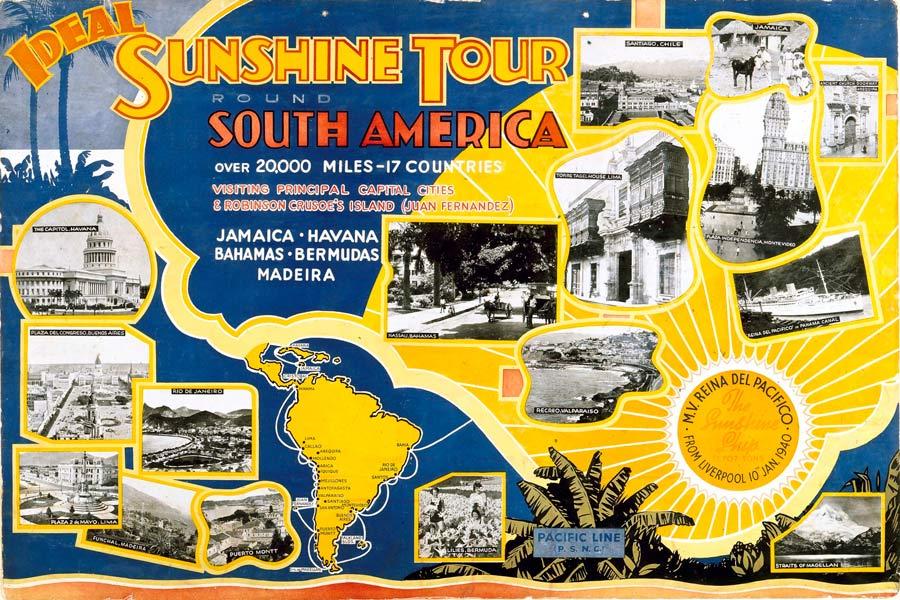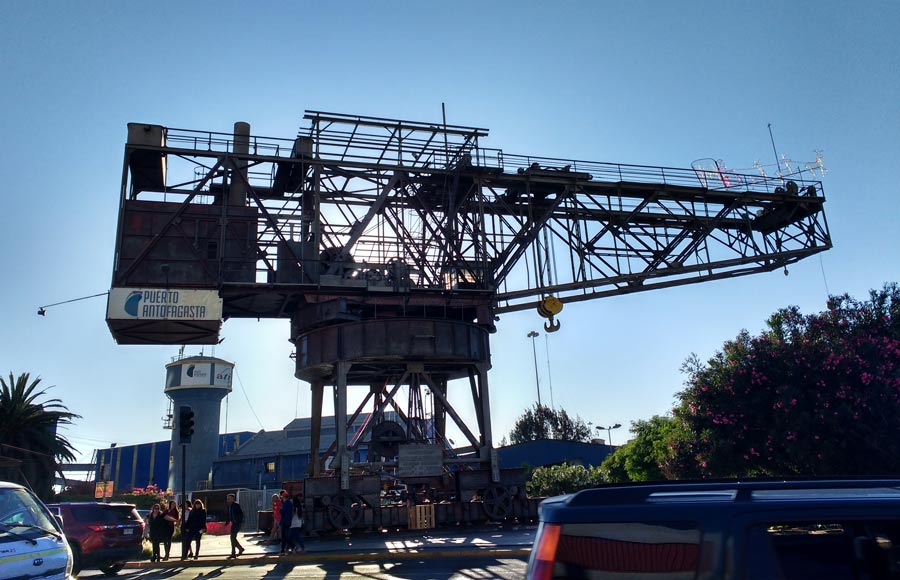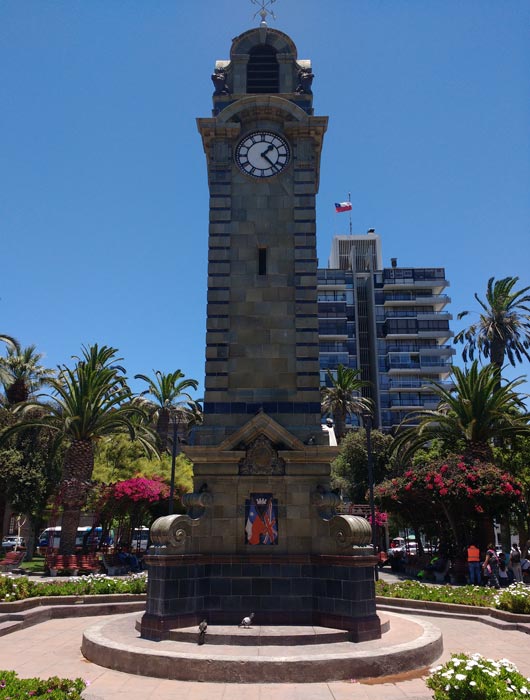Sunshine tours of South America

This lovely poster is on display in the Life on Board gallery at the Maritime Museum. The gallery, which opened in summer 2020, is part of extensive redevelopment work on the second floor of the museum that also included a refurbishment of the Archives Centre.
This poster sparked good memories for me as I was lucky enough to spend 3 months in South America a couple of years ago. I have been reliving that trip recently because during lockdown I got my travel fix by watching Race Across the World on BBC TV, which featured a race through South America. By the way, if this poster has inspired you to dream of exotic locations then you can explore other examples of routes and voyages in the Liverpool shipping poster collection on the website.
On our trip in South America our route was decided partly by the main tourist destinations, but at certain points was strongly influenced by maritime history. There were very few, possibly no, other British tourists visiting the port of Antofagasta in northern Chile, but, if like me, you know about the role played by Liverpool shipping companies in the nitrate trade, then it is well worth a visit. I was very excited when I found a reference to the Liverpool firm Pacific Steam Navigation Company (PSNC) in the local museum.

I think you can see the same influences at play in the route of the ‘Sunshine tour of South America’ advertised in the poster. For while the proposed 1940 route of Reina del Pacifico’s cruise includes the main tourist attractions of the continent, it is also heading for Antofagasta. Its route up the west coast is an echo of the route that Liverpool vessels from companies such as PSNC and Lamport and Holt started in the mid 19th century and continued throughout much of the 20th century. The North Atlantic route between Liverpool and North America is well known and has several strong themes – emigration, Blue Riband liners, Cunard Yanks and all that, but Liverpool had equally strong links with South America, but in rather less glamorous fields - mail delivery, bird droppings (guano for fertiliser), minerals etc and these connections have influenced the tourist cruise route.
The disused cargo crane shown above is an impressive piece of port infrastructure which tells of Antofagasta's past. Further evidence of British business links to the port is the clock tower in Plaza Colón, pictured below. Built by the British Community in the town in 1912 to commemorate the centenary of the Republic of Chile, it was apparently modelled on the tower now known as the Queen Elizabeth Tower and the bells sounded like Big Ben.
There were equally strong links between Liverpool and the east coast of South America from the meat and beef trade. Those links resulted in us visiting the UNESCO listed industrial landscape of Fray Bentos in Uruguay. Perhaps unsurprisingly, we didn’t see any other British tourists there either. I will be very surprised if the teams taking part in Race Across the World find themselves there.

